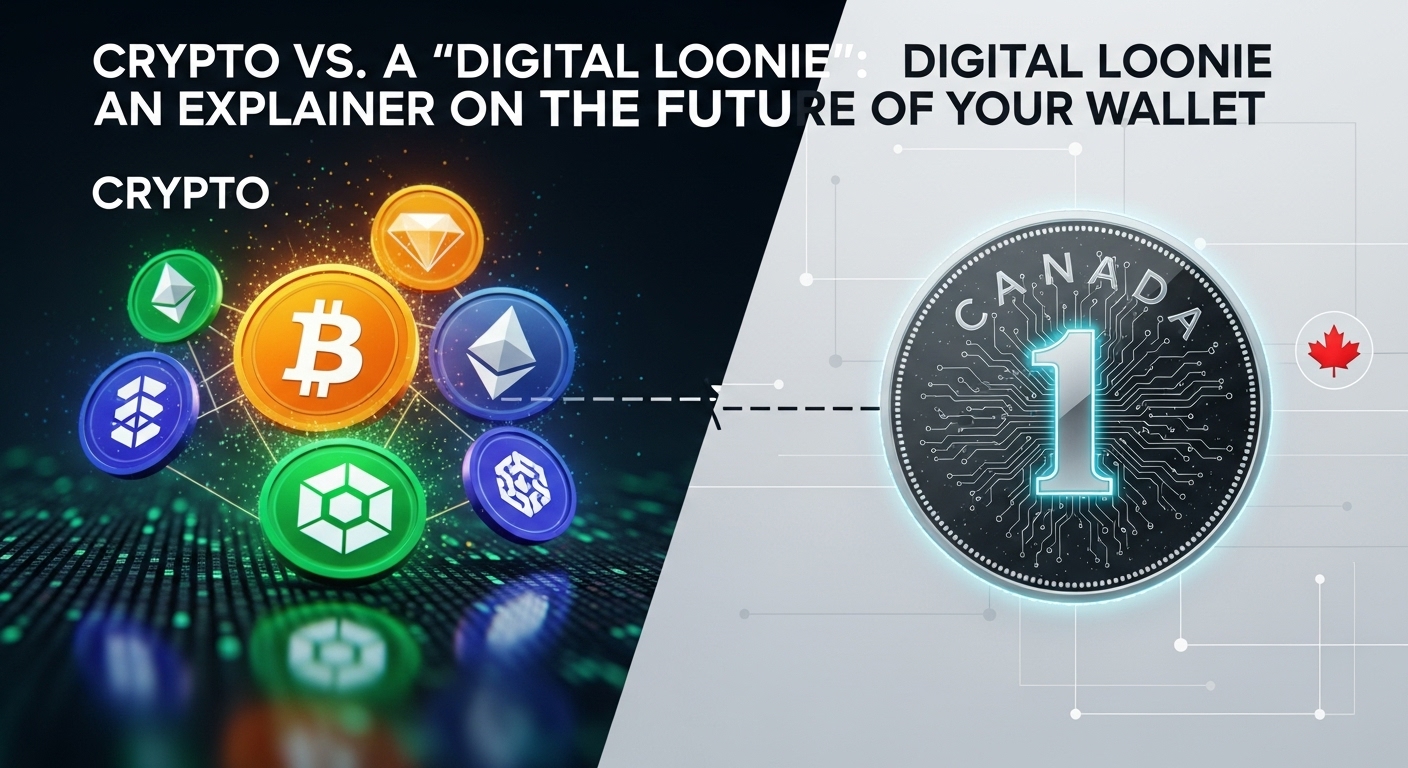Introduction
The 21st century has witnessed a profound transformation in the nature of money. This evolution is now at a critical inflection point, defined by two powerful and competing visions for the future of digital currency. The first is the decentralized model of cryptocurrencies like Bitcoin. The second is a centralized, state-issued model known as a Central Bank Digital Currency (CBDC), or a “digital loonie.” This report provides a comprehensive comparative analysis of these two paradigms and their implications for Canada.
Part 1: The Decentralized Vision – Understanding Bitcoin
Bitcoin emerged in 2009 from a white paper by the pseudonymous Satoshi Nakamoto, proposing a “peer-to-peer electronic cash system.” The goal was to create a “trustless” system for online payments without needing a financial institution like a bank. This philosophy is the driving force behind the entire decentralized finance movement.
The Core Technology: Blockchain
Bitcoin is powered by blockchain technology, which acts as a decentralized, distributed, and public digital ledger. Transactions are grouped into “blocks” and added to a chronological “chain.” Because every participant in the network holds a copy of this ledger, it provides a transparent and immutable record of all activity. The system is secured through powerful cryptography and a consensus mechanism known as “mining.”
The Principle of Decentralization
The defining characteristic of Bitcoin is that control is distributed among all participants, not concentrated in a single entity like a government or central bank. This makes the system highly resilient and censorship-resistant. The ethos of this model is the protection of individual financial sovereignty.
Part 2: The Centralized Vision – Deconstructing the CBDC
In stark contrast stands the centralized, state-sanctioned vision of the Central Bank Digital Currency. A CBDC is a digital form of a country’s official currency that is a direct liability of the central bank. It would be the digital equivalent of a physical banknote, carrying the full faith and credit of the state.
The Rationale for a “Digital Loonie”
Over 90% of central banks, including the Bank of Canada, are exploring CBDCs for several reasons:
- Defensive Motivations: To preserve the relevance of public money as cash use declines and to compete with the rise of private digital currencies like stablecoins.
- Proactive Motivations: To improve payment efficiency, foster innovation in financial services, and enhance financial inclusion for unbanked populations.
Part 3: A Comparative Framework: Bitcoin vs. CBDC
The two visions embody fundamentally opposed philosophies about money and control.
- Governance: Bitcoin is decentralized, governed by consensus. A CBDC is centralized, governed by the central bank.
- Supply: Bitcoin’s supply is algorithmic and finite (capped at 21 million coins). A CBDC’s supply would be elastic, controlled by the central bank’s monetary policy.
- Value: Bitcoin’s value is highly volatile, making it a speculative asset. A CBDC would be stable, pegged 1-to-1 with the national currency.
- Privacy: Bitcoin offers pseudonymity on a public ledger. A CBDC would be inherently traceable by the issuing authority, raising significant privacy concerns.
Part 4: The Privacy Dilemma and the “Digital Loonie”
No issue has generated more public concern than the privacy implications of a CBDC. The potential for a CBDC to create an unprecedented infrastructure for financial surveillance fundamentally alters the relationship between the citizen and the state.
This concern was the dominant theme in the Bank of Canada’s public consultation on a digital dollar. The feedback revealed that Canadians were “deeply concerned about a CBDC eroding financial privacy.” This overwhelming public opposition was a decisive factor in the Bank’s late 2024 announcement that it was “scaling down its work on a retail central bank digital currency.” For the foreseeable future, the Bank’s role will be one of monitoring, not active building.
Conclusion: The Coexistence of Competing Futures
The future of money is unlikely to be a zero-sum game. It is highly probable that centralized, state-controlled digital currencies will coexist and compete with a diverse ecosystem of decentralized, private digital assets. The ultimate balance will be shaped by ongoing public debate over the fundamental trade-offs between efficiency, stability, privacy, and freedom.

